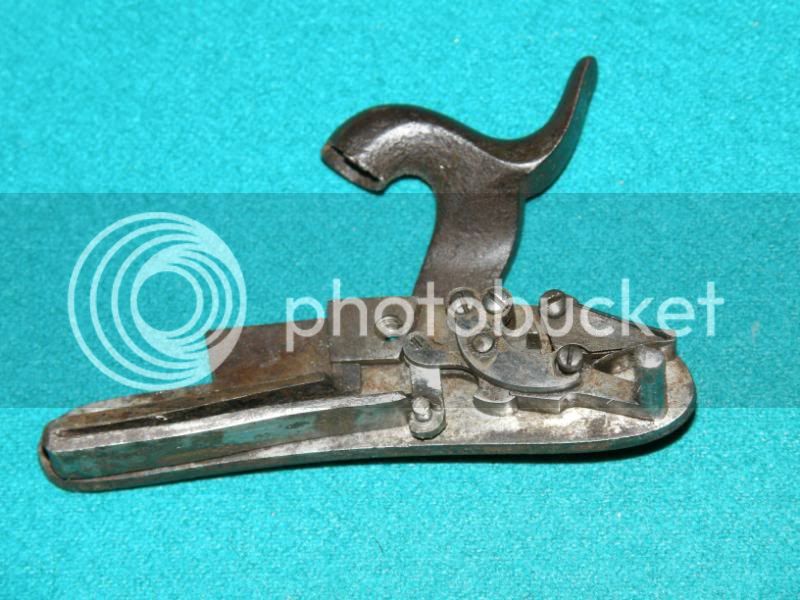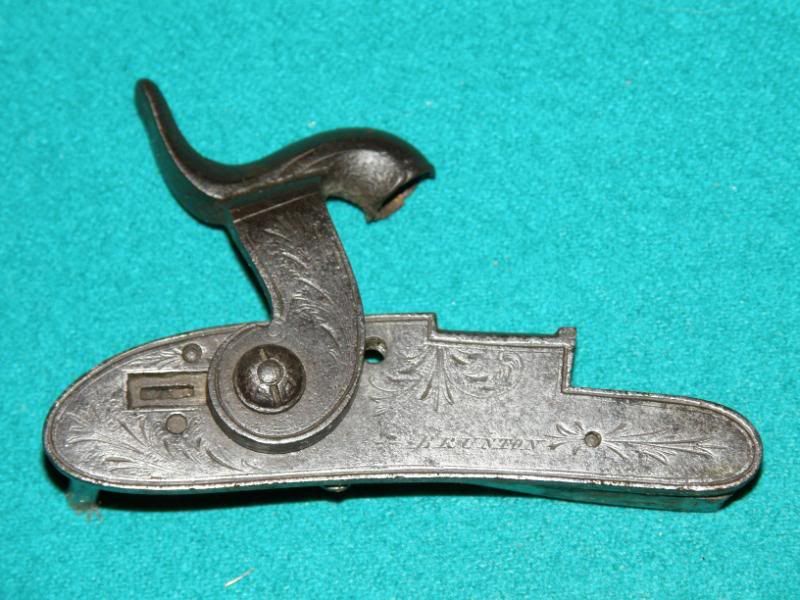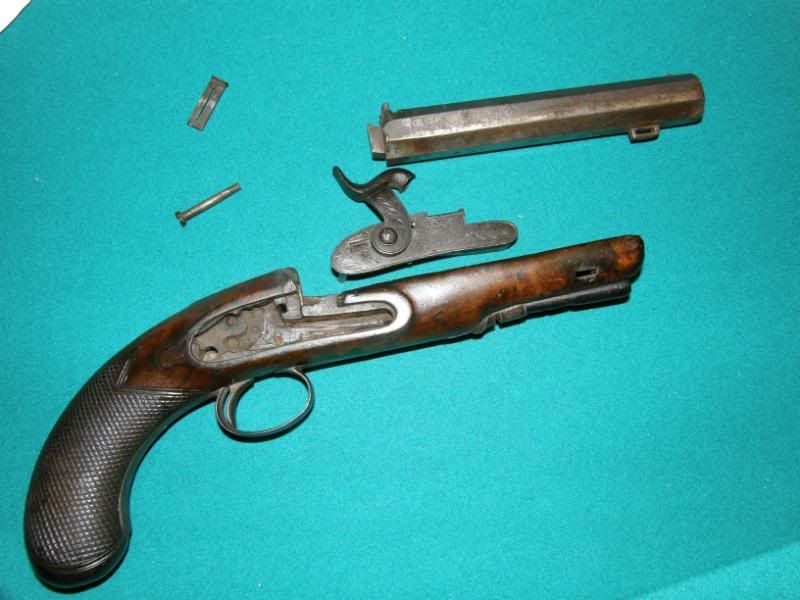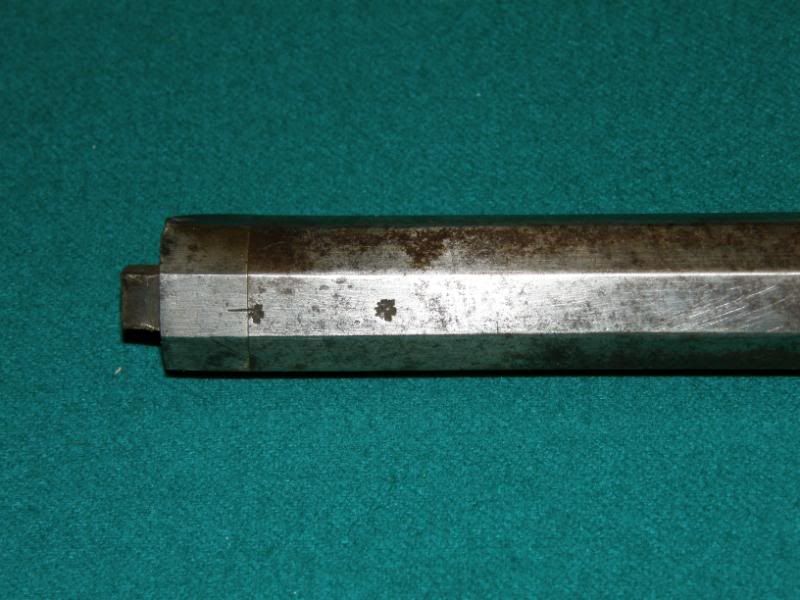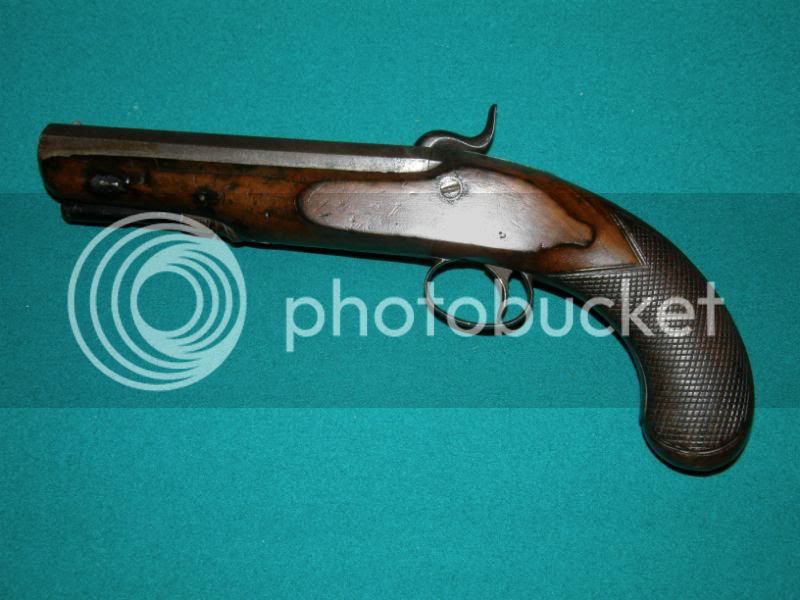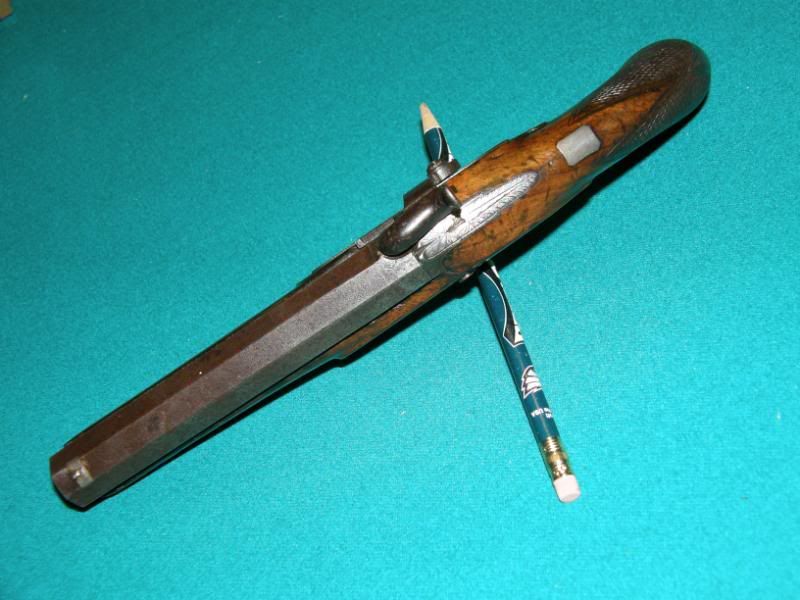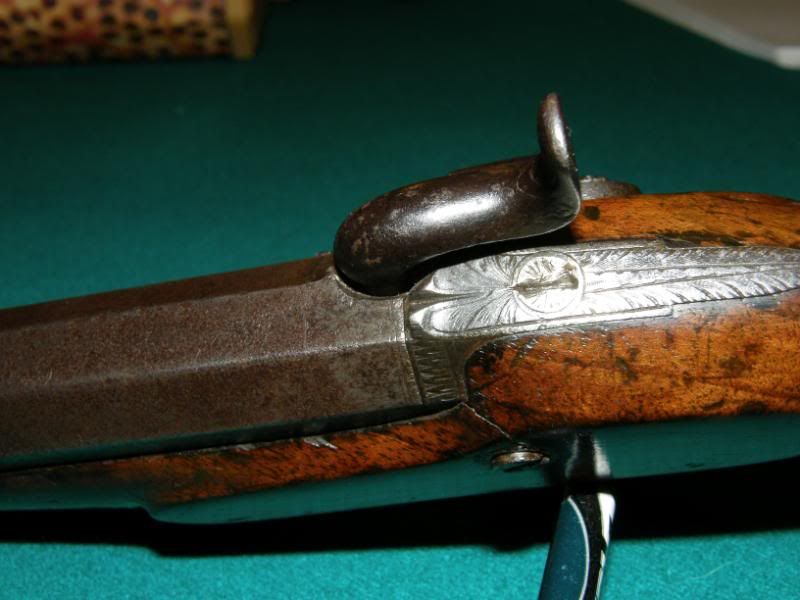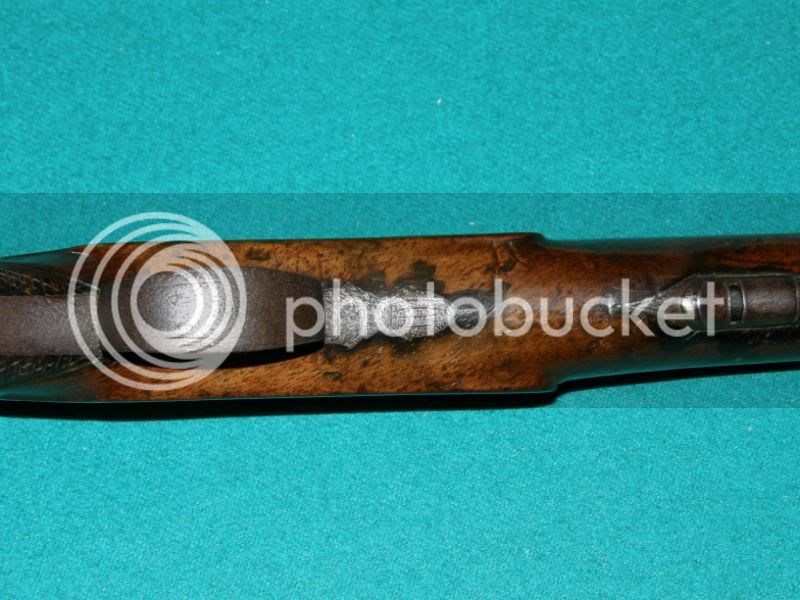- Joined
- May 9, 2005
- Messages
- 1,548
- Reaction score
- 100
I have a percussion pistol, marked Brunton on the lock.

I found a Richard Brunton listed in 1823 in York, see link Alphabetical directory and I found a turn-off pistol that he marketed (although almost surely didn't make)... Lot #579 but this pistol is definitely later, about 1850, I'd guess.
A reference to an even earlier one here...
Link
Is this likely the same Brunton, just 25 years later? Does anyone have any more information in his library?

I found a Richard Brunton listed in 1823 in York, see link Alphabetical directory and I found a turn-off pistol that he marketed (although almost surely didn't make)... Lot #579 but this pistol is definitely later, about 1850, I'd guess.
A reference to an even earlier one here...
Link
Is this likely the same Brunton, just 25 years later? Does anyone have any more information in his library?





